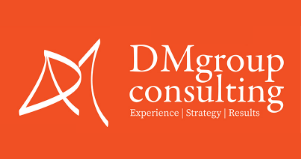Creating a fundraising plan is essential for any nonprofit. It helps you raise the money you need to support your programs and achieve your mission. Without a solid plan, your efforts may lack direction and fall short of your financial goals. A well-crafted fundraising plan provides a clear roadmap, making it easier to navigate the challenges and opportunities along the way.
In this blog, we will explore the steps to craft a perfect fundraising plan. By breaking it down into manageable sections, we will guide you through setting your goals, identifying your audience, crafting your strategies, and evaluating your efforts. These steps will help you create a comprehensive plan that can lead to fundraising success for your nonprofit.
Setting Your Fundraising Goals
The first step in crafting a fundraising plan is setting your goals. These goals act as your destination, guiding all your fundraising efforts. Clear goals make it easier to measure your success and keep everyone focused.
Start by deciding how much money you need to raise. This should be based on your nonprofit’s budget and the specific needs of your programs. For example, if you need $50,000 to fund a new community center, that becomes your fundraising goal. Make sure your goal is realistic but also challenging enough to motivate your team.
Next, break this big goal into smaller, more manageable objectives. Perhaps aim to raise $12,500 each quarter or run monthly campaigns to hit mini-goals along the way. This makes the overall goal less overwhelming and easier to track. Each of these smaller objectives should be Specific, Measurable, Achievable, Relevant, and Time-bound (SMART).
Lastly, write down your goals and share them with your team. Everyone should understand what you are trying to achieve and why it matters. Setting clear fundraising goals helps align all your efforts and gives you a clear target to aim for.
Identifying Your Target Audience
Once you have your goals set, the next step is to identify your target audience. Knowing who you are trying to reach makes your fundraising efforts more effective. It’s important to reach out to people who are most likely to support your cause.
Start by looking at your current supporters. Who donates to your nonprofit now? Are they individuals, businesses, or foundations? Look at data on their age, location, interests, and donation history. This helps you understand your existing audience better and see who else might be interested in supporting your cause.
Next, think about who else might be willing to help. For example, if your nonprofit works with animals, pet owners and animal lovers might be good targets. Create profiles or personas of your ideal donors. These profiles should include basic information like age and occupation, as well as interests and motivations.
Finally, think about the best ways to reach these people. Consider different methods like email, social media, events, or direct mail. Each audience might respond better to different types of outreach. Identifying your target audience helps you tailor your messages and strategies, making your fundraising efforts more successful.
Crafting Your Fundraising Strategies
Once you know your fundraising goals and target audience, it’s time to craft your strategies. These strategies are the actions you will take to reach your goals and engage your audience. A mix of different methods can help you reach a broader group of potential donors.
Start with planning different fundraising activities. These could include events like a charity run, online campaigns, grant applications, and face-to-face meetings with major donors. Each activity should have a clear purpose and a way to measure success. For example, if you plan a charity run, decide how many participants you aim to attract and how much money you hope to raise.
Next, think about how you will communicate with your audience. Your message should be clear and compelling. Explain why your cause matters and how their donation will make a difference. Use stories and real-life examples to make your message more relatable. Depending on your audience, you might use social media, email newsletters, flyers, or personal phone calls.
Finally, consider partnerships. Partnering with local businesses or other nonprofits can expand your reach. They might help sponsor events, spread the word, or provide in-kind donations. Crafting effective strategies involves creativity and careful planning, ensuring that each step brings you closer to your fundraising goals.
Implementing and Evaluating Your Plan
With your strategies in place, the next step is implementation. This is where your plan comes to life. Successful implementation requires coordination, communication, and ongoing assessment.
Start by assigning roles and responsibilities to your team. Make sure everyone knows what they need to do and when. Create a timeline with key milestones and deadlines. Use project management tools or simple checklists to keep track of tasks and progress. Regular team meetings can also help ensure everyone stays on the same page.
As you implement your plan, monitor your progress regularly. Keep track of key metrics like funds raised, donor engagement, and event attendance. If something isn’t working as expected, be ready to make adjustments. Flexibility is key to adapting to new challenges or opportunities that arise.
After completing each fundraising activity, take time to evaluate its success. What went well? What could have been better? Gather feedback from your team and participants. Use this information to refine your strategies for the future. Implementing and evaluating your plan helps you learn and improve, increasing your chances of success with each fundraising effort.
Conclusion
A good plan keeps everyone focused and aligned. It helps you navigate challenges and seize opportunities. By breaking down the process into manageable steps, you make it easier to stay on track and achieve your fundraising goals.
If you’re ready to take your nonprofit fundraising planning to the next level, look no further than DM Group Consulting. Our team of experts can help you craft a plan tailored to your nonprofit’s unique needs. Contact us today, and let’s make your fundraising efforts a success.




